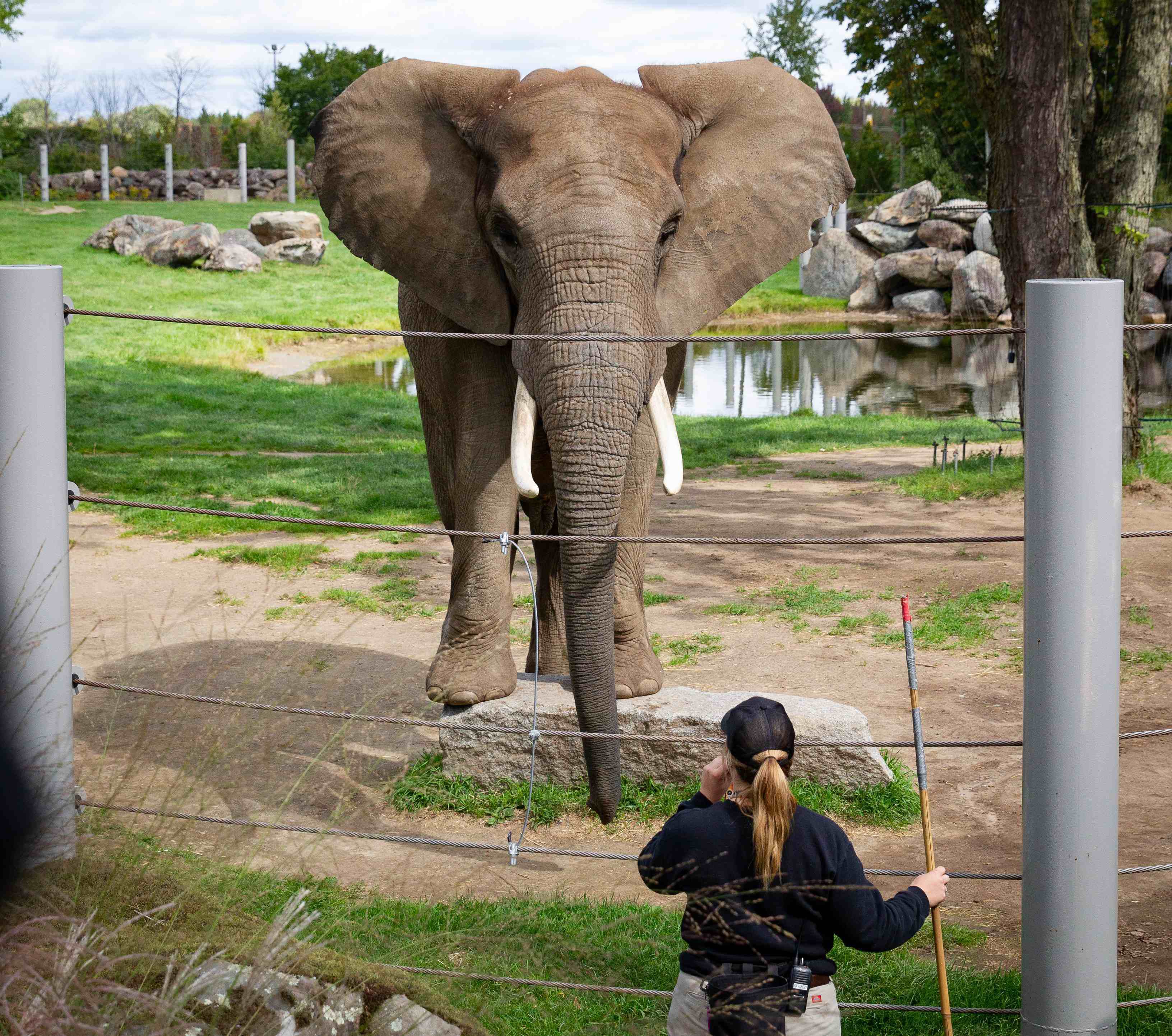<p>A Technician Under the Spell... </p> <p>Of a Little Golden Frog!</p>
A Technician Under the Spell...
Of a Little Golden Frog!
The very least we can say about our technicians who work at the Zoo is that they do so with heart and passion.
For Valentine’s Day, we’d like to introduce you to Julie Trudel, a technician who has committed herself to a very special project: The reproduction within a zoological environment of a critically endangered amphibian, the Panamanian golden frog. And no, she’s not trying to find some Prince Charming hiding inside these small batrachians! In fact, her motivation lies in the hope of saving the species in the wild, where they’re considered rare, even probably extinct!
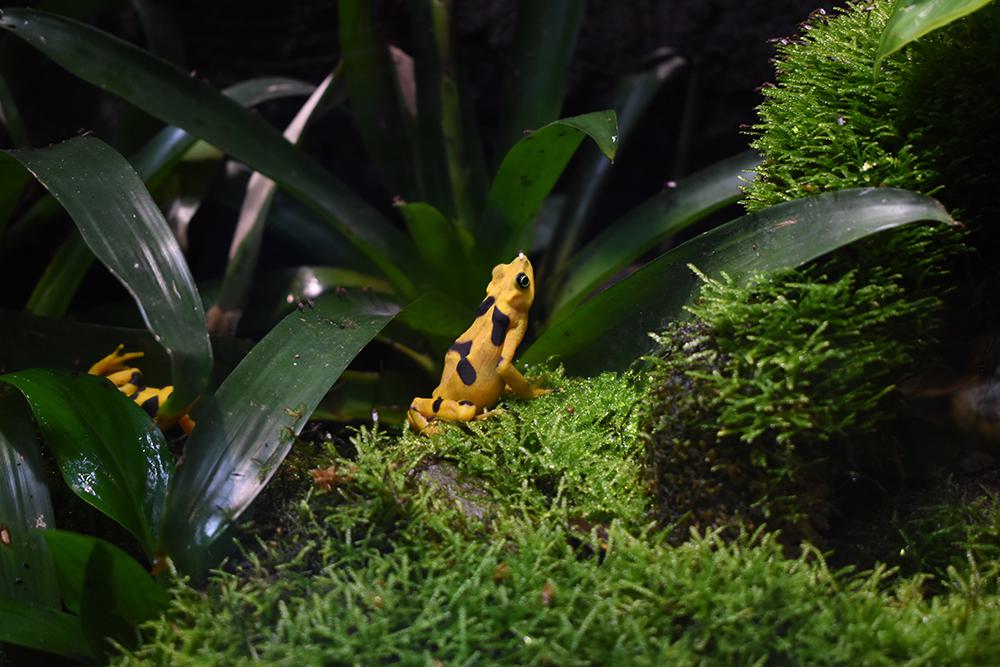
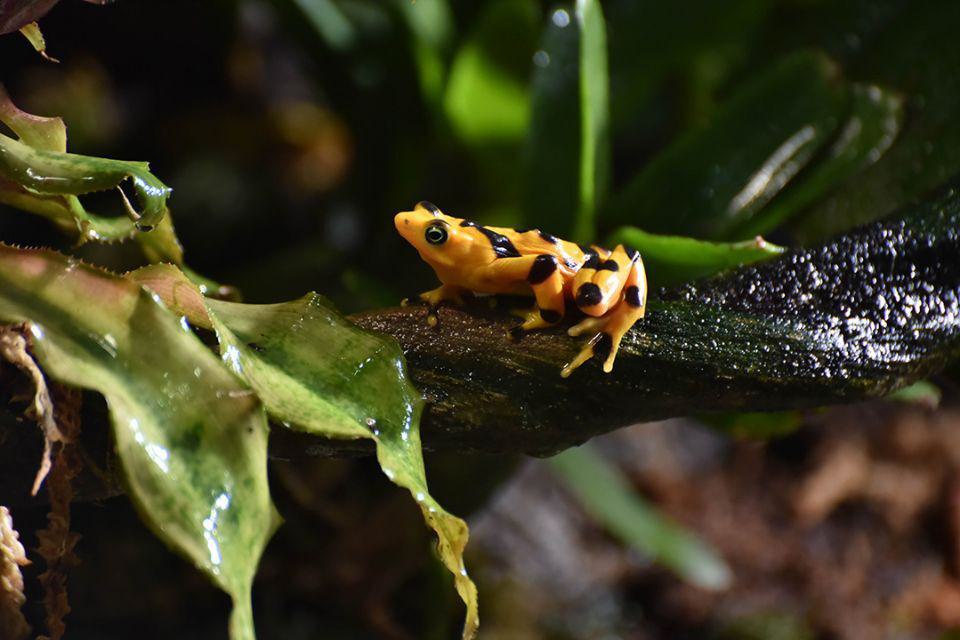
The Object of All This Attention: The Panamanian Golden Frog
The Panamanian golden frog, despite its name, is actually a frog-like toad. Its bright yellow colouring is said to be aposematic, meaning that it signals to potential predators that its owner is poisonous. In the wild, glands on the surface of the frog’s epidermis produce a toxin from the insects that it consumes.
Its smooth back is yellow with black markings, sometimes in the shape of an X, and its belly is uniformly yellow. Males and females have similar colourings and patterns, but females are larger in size than their male counterparts.
Panamanian golden frogs have been classified as critically endangered on the International Union for Conservation of Nature (IUCN) Red List.
Until 2005, these small amphibians were fairly common and regularly encountered in the wild.
Since then, in addition to losing their habitat and being captured for the pet trade, they’ve been severely affected by chytridiomycosis, a disease caused by an aquatic fungus called Batrachochytrium dendrobatidis.
In fact, some populations disappeared within a few months towards the end of 2004, and no individuals have been observed inside their natural area of distribution in the wild since 2009.
Zoological Institutions to the Rescue!
Some 40 zoological institutions, accredited by the AZA (Association of Zoos and Aquariums), including the Zoo de Granby, have rolled up their sleeves and are working to maintain viable, genetically diverse populations to save the species!
In 2023, throughout these institutions, 413 males and 339 females produced 1,638 little frogs; notably at the Baltimore and Buffalo zoos, where the teams have been extremely active in this conservation project for many years.
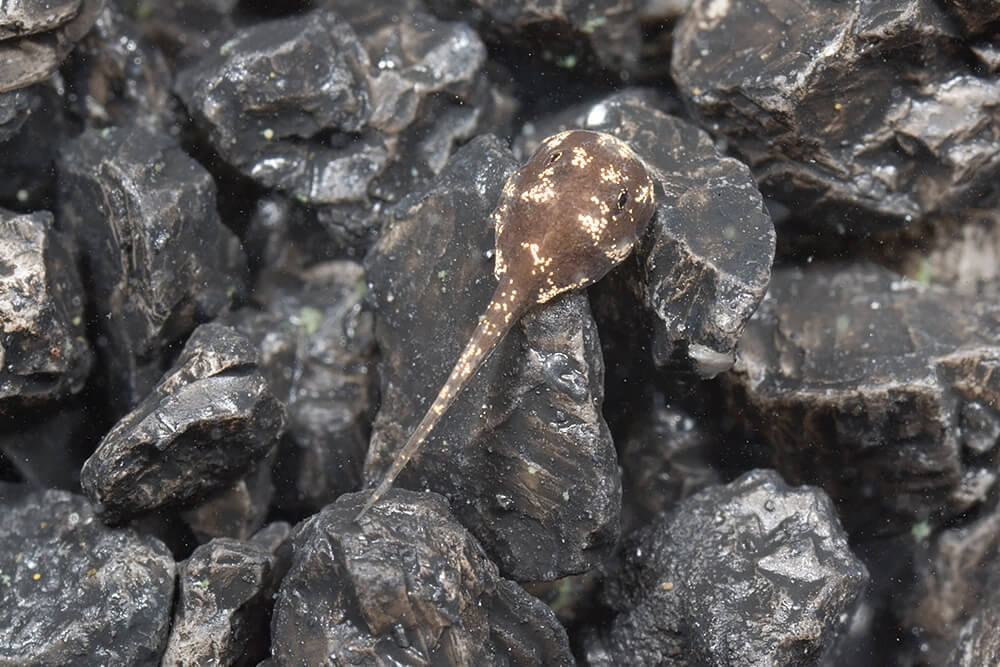
Twenty adult specimens (16 males and 4 females) were entrusted to our Québec institution with the aim to preserve a small population and attempt to reproduce the species, a challenge that technician Julie Trudel and her colleagues took on with great enthusiasm!
It goes without saying that reproducing these delicate amphibians is by no means an easy task! Of the 40 or so zoological institutions that house them, only a handful are actually able to reproduce them.
It took the collective experience added to the expertise of the Zoo’s specialists and the support of the zoological community, to produce eggs, tadpoles ... and finally, on February 2, the very first baby frog hatched inside our Granby breeding installations!
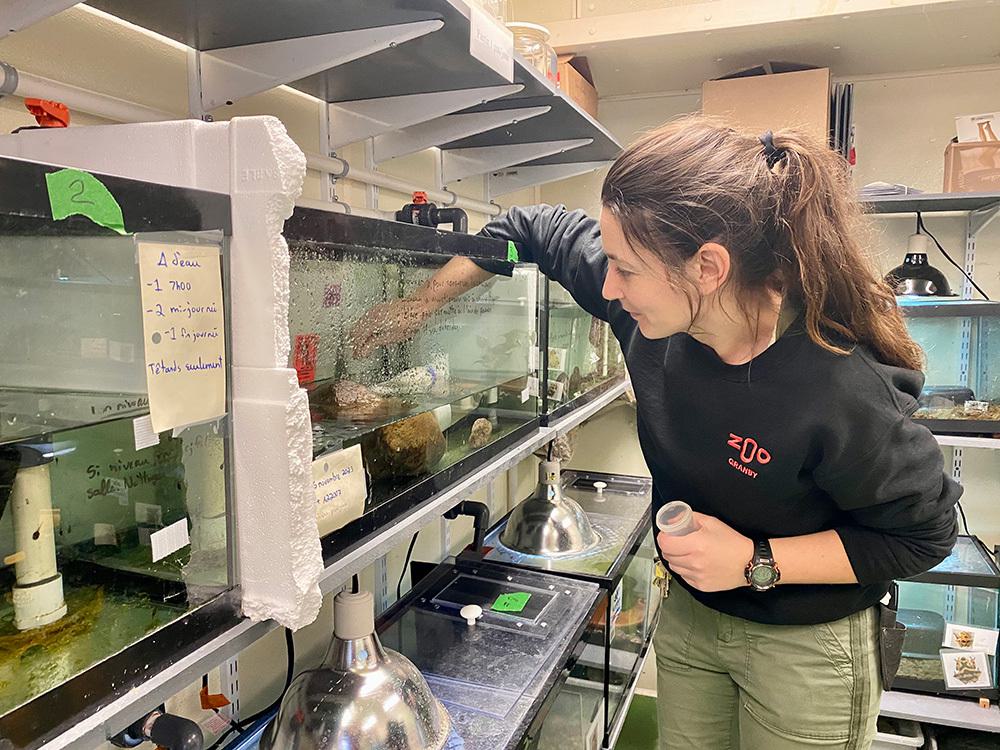
Thoroughness and Meticulous Care
About a hundred little tadpoles are currently wriggling in the reproduction pools set up inside a room specially designed for these tiny frogs.
Julie and her colleagues monitor the appearance of legs in certain tanks, a sign that they’ll have to lower the water level in order to expose some rocks and allow the new frogs to begin their terrestrial life.
They also make sure that their living environment aquariums are always “watertight”; this is not the time to lose any mini tadpoles in the filtration system or for a small frog to start playing Houdini in the room!
Here, nothing is left to chance, and, in fact, the entire environment is controlled. These amphibians are highly sensitive to the slightest variations in temperature and water chemistry.
They live in practically pure water, which has even had to be treated by ozonation to reduce conductivity; dechlorinated water has a conductivity of approximately 200 µS/cm, whereas the frog tolerates 50 µS/cm!
A great deal of time and extensive reading went into preparing the reproduction protocol, which the technicians continue to refine in the light of their own experience. It’s an exercise in patience, and trial and error, which not only helps us learn more, but also increases our chances of success!
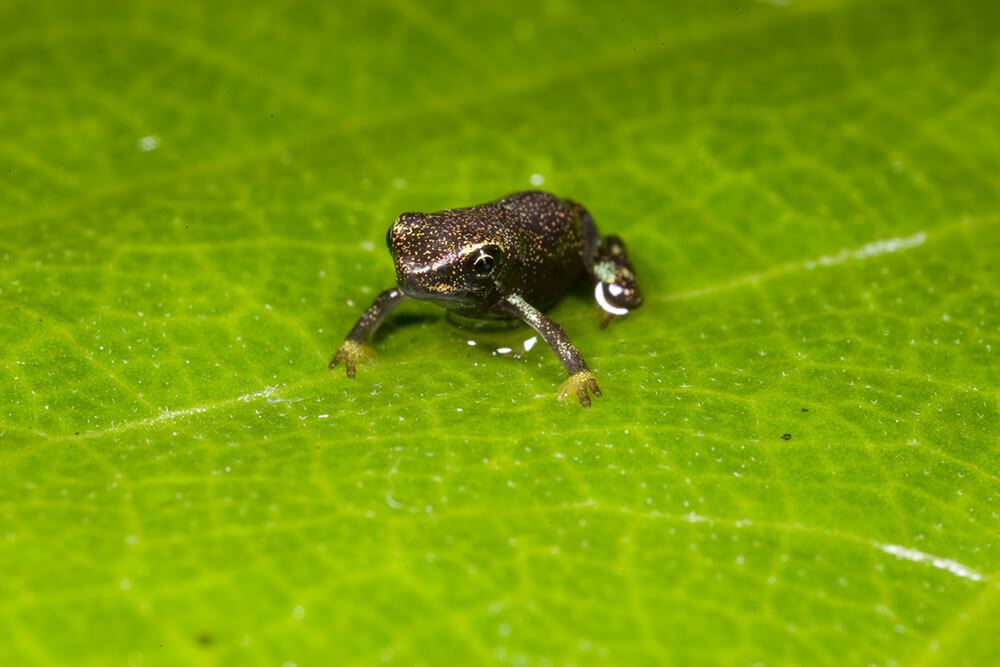
Highly Specific Needs
Julie and her colleagues monitor the appearance of eggs in the abdomen of the females in order to introduce the males at the right moment.
In amplexus, a male, latching onto the female’s back, will fertilize the fine string of eggs simultaneously as she produces them. As small as the tip of a pencil, these eggs are also sensitive to light! The technicians must therefore carefully collect the long ribbons and cover the incubation aquariums until the eggs hatch.
Feeding is also a challenge for this small colony, which combines different stages of growth.
The tadpoles, which are herbivores, are fed seaweed powder. The frogs, from the juvenile stage to adulthood, are fed four species of insects raised on site, including tiny springtails, fruit flies, weevils and fledgling crickets. As well as devoting their time tending to these little golden frogs and the hundred or so tadpoles under their care, the technicians must also produce (and maintain!) food supplies for their precious amphibians.
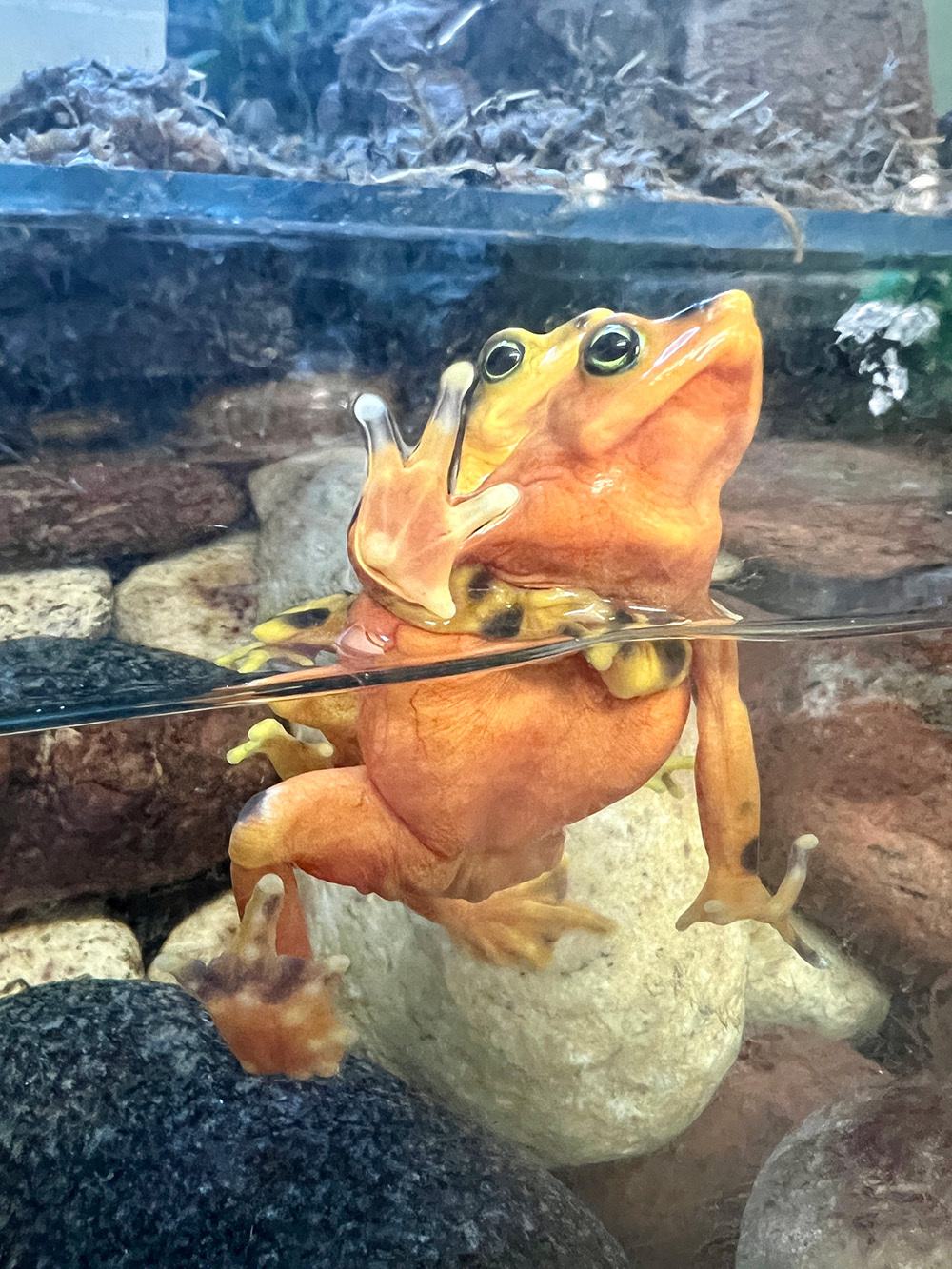
By her own admission, Julie confirms that, although it’s a wonderful project, it’s quite a lot of work! In fact, she and her colleagues dedicate almost 90 minutes a day to breeding Panamanian golden frogs while still answering to the needs of all the other species residing in the South American temple and for which they’re responsible.
Contributing in this way to the preservation of a species that is probably extinct in the wild gives them a satisfaction that is hard to put in words, but for which they’re willing to reorganize their work schedule.
Indeed, the first full-term birth of a baby frog at the Zoo de Granby is the best possible reward for all the efforts made so far!



